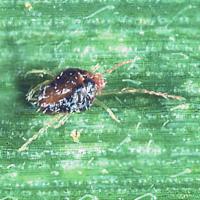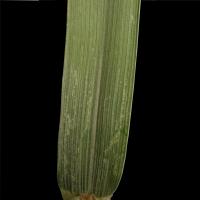Diagnosing brown wheat mite
Brown wheat mite is an uncommon sap-sucking pest of cereals that is most active in dry warm weather.
What to look for
- Adults are 0.6 millimetres (mm) long, red-brown and globular in shape.
- Pale yellow-orange legs with the forelegs distinctly longer than the other 3 pairs.
Insect Adult
- Nymphs are smaller in size and orange-red.
Insect Nymph
What else could it be
| Condition | Similarities | Differences |
|---|---|---|
|
Bryobia mite
|
Reddish legs and a pie-shaped body with the front legs longer than the rest | Bryobia mite differs in body colour, ranging from dark grey to orange or olive and they prefer broadleaf plants |
| Diagnosing balaustium mite | Red legs and dark body | Balaustium mite is much larger with legs all the same size |
Where did it come from?

Green bridge
- Brown wheat mites usually have many generations per season and do not require cold temperatures to stimulate egg hatching. Eggs hatch when there is sufficient moisture.
- Mite damage is common in early sown crops in years when they transfer from self sown cereals following summer rains.
- Heavy winter rain reduces their population, but they can affect crops in spring in very dry seasons.
Management strategies

Weed and pasture control
- Early control of summer and autumn weeds, especially self-sown cereals will help to control populations.
- Control may not be cost-effective in drought affected crops.
- Apply pesticide sprays, when there is sufficient damage and when there will be a yield response.
Page last updated: Wednesday, 21 November 2018 - 4:20pm



